Mosaics and Mayors
Or, how I randomly discovered my favorite STL mayor within the Cathedral Basilica
Welcome to Unseen St. Louis, where I share stories of lesser-known aspects of St. Louis history. In today’s article, I wanted to share the synchronicity that led me to discover the image of one of our past (and my favorite) St. Louis mayors displayed prominently in the mosaics of the St. Louis Cathedral Basilica on Lindell Blvd.
The preamble
It was entirely unexpected. I had scheduled a meetup visit to the St. Louis Cathedral Basilica for this past Wedneday, and was excited because it was a place I had never been. And it was amazing, and I learned a ton (some of which I’ll share below.)
Meanwhile, I decided I needed to get started on a major research project I’m working on, so I reached out to the Missouri Historical Society, and the response I received on Monday sent down a new rabbit hole. Along the way, and quite unexpectedly, I discovered that my research subject, 19th century St. Louis mayor Bryan Mullanphy, just happens to be featured in a mosaic on the Cathedral Basilica ceiling.
Holy coincidence, Batman! Personally, I always take those synchronicities to mean I’m working on exactly what I should be.
Have you heard of Bryan Mullanphy?
Serious question. I first discovered him when I was doing research a couple of years ago. Even though there isn’t a whole lot known about his life, and he died young, he still has a special place in my heart. Other than history pros and regular readers of Unseen St. Louis (as I think I’ve written about him at least three times!), not many people today know anything about him, leading me to think his life and legacy are woefully underappreciated (I mean, his father has a Missouri Encyclopedia entry, but not poor Bryan).
So if you don’t know who he was, here’s the short version.
Bryan was the only son of John Mullanphy, an Irishman who became St. Louis' first millionaire. He was born in 1809 in Baltimore, and studied at the Sorbonne in Paris. Eventually he became a lawyer, and in 1840, he was appointed as a Circuit Court judge. In 1847, he was elected Mayor of St. Louis for a one-year term (imagine one-year terms today!). Despite being the only son of a wealthy man, he never married or had children (I wonder….), so the family name ended with him when he died in 1851.
While in Paris, Bryan was inspired by the new Society of St. Vincent de Paul, founded in France in 1833 by Frederic Ozanam to provide food, funds, and religious instruction to Paris's poor. Bryan, along with local Catholic community leaders, sought and received approval to form the first U.S. chapter of the Society of St. Vincent de Paul here in St. Louis.
And if that wasn’t enough, before his death, Bryan willed a portion of his estate to the City of St. Louis, and those funds helped to establish various institutions that helped the city’s population, including the Travelers Aid Society, the Mullanphy Hospital, the Mullanphy School, and the Mullanphy Emigrant Home (which tragically burned down recently).
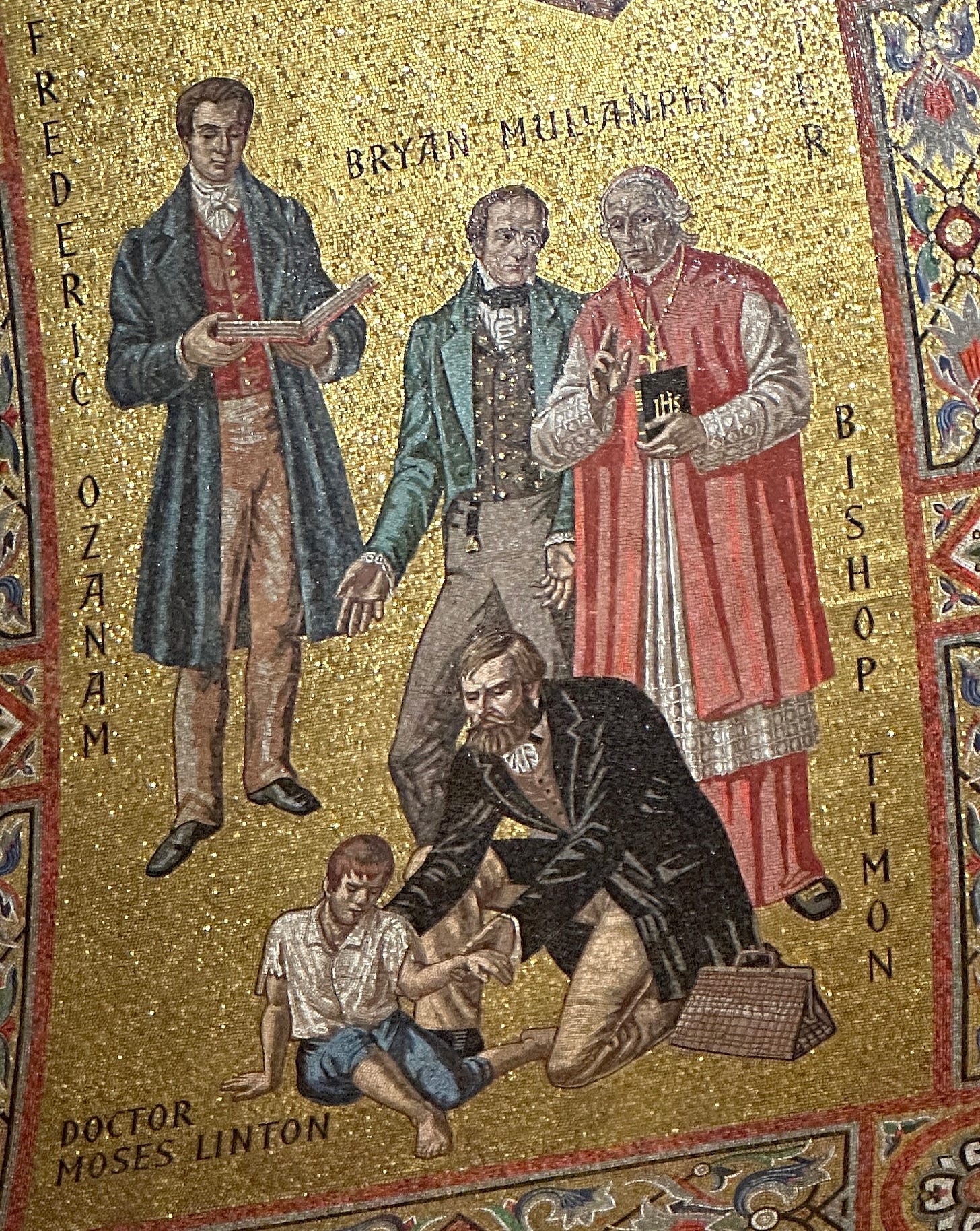
Bryan Mullanphy might not be a household name in St. Louis these days, but being commemorated in a mosaic in a cathedral ain’t too shabby.
Before now, had you ever heard of the Mullanphys before? Are you maybe even a descendant? (As I recently discovered, many St. Louisans are descendants of one of Bryan’s sisters, including at least one of my high school classmates). If so, let me know about it in the comments. And if you happen to have any books or family history about the Mullanphys, please let me know.
A little about the Cathedral Basilica itself
And now onto the Cathedral Basilica, which doesn’t really qualify as “unseen” at all….except it did for me!
I grew up in St. Louis, and my mom—a practicing Catholic—worked the entire time at Jewish Hospital a mere one mile away, but I never even knew the place existed until I moved back and started Unseen St. Louis. I knew about a lot of cool places in STL but that wasn’t even on the list. So for many readers it’s very familiar but it wasn’t even on my radar until the past year or so.
So with that odd bit of personal history… here are some of the fun tidbits I learned on our tour on Wednesday.
The Cathedral Basilica of St. Louis was constructed between 1907 and 1914.
Architecturally, the building presents a blend of styles: Romanesque on the exterior and Byzantine-influenced interior, a rare combination for Catholic churches. This design choice was spearheaded by Cardinal Glennon, who aimed to create a unique structure distinct from other local churches. (He is interred within the cathedral’s crypt, along with Archbishop May, Cardinal Ritter, and Cardinal Carberry.)
Behold the gorgeous exterior:
Below is a floor plan for the cathedral. (Note the St. Vincent de Paul arch, just before the central dome—this is where the Mullanphy mosaic can be found. Like I said, not too shabby, Bryan!)
The mosaics
The cathedral would be an amazing building under normal circumstances, but it is the extensive mosaics that cover the walls and dome that make it one-of-a-kind. These intricate mosaics, installed in waves between 1912 and 1988, comprise an estimated 40 million individual stones. (All of the wall artwork is mosaic—there are no paintings.) Notably, the Cathedral also claims to house the world's largest single mosaic.
To create the mosaics, over 30 different artists used “cartoons” of their design as a reference and then, instead of directly applying each mosaic tile to the wall, they arranged the tiles upside down on brown paper, later adhering this assemblage to the cathedral walls and removing the paper to reveal the artwork. (It makes my brain hurt to imagine the complexity of this process.)
The stylistic approach varies: some mosaics are in the Italian style, characterized by more pastel tones, including the earliest pieces designed by Tiffany and Co. The majority, however, are in a Byzantine style, notable for being struck with a hammer, resulting in brighter, more textured, and luminous tiles. All tiles used are made of either stone or glass.
In honor of the city’s namesake saint, around the vestibule are a number of mosaics of the life of St. Louis, and there is a statue of him within the cathedral as well.
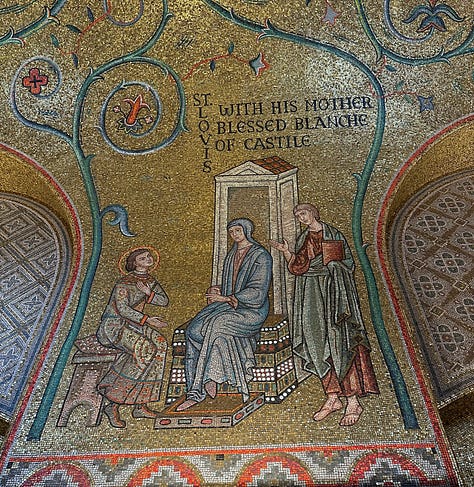

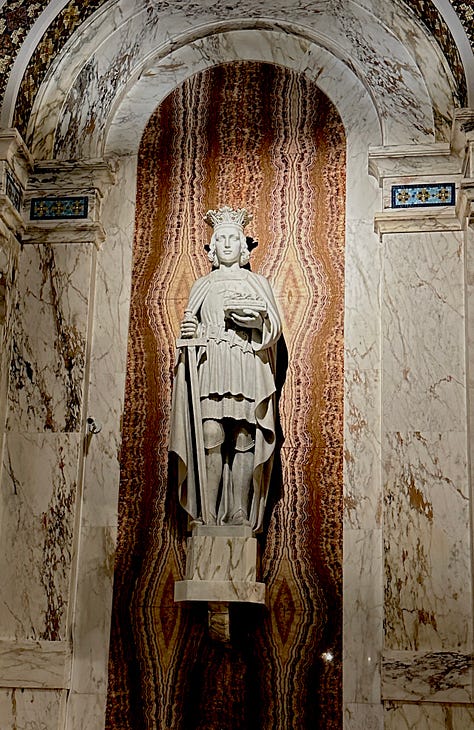
Other artwork
In addition to the mosaics, the cathedral houses a statue of the Pieta, an exact replica of Michelangelo's Pieta in St. Peter's, Rome. During World War II, fearing damage to the original, plaster casts were made of the Pieta and other significant statues. From these casts, in the 1990s, permission was granted to create bronze statues, resulting in only nine such replicas of the Pieta in existence.
And while they may escape notice from many visitors whose eyes are glued to the ceilings, the cathedral's pews are also interesting, as they feature the design of an Irish cross and a fleur-de-lis, symbolizing Ireland and St. Louis respectively, in honor of Cardinal Glennon, who was born in Co. Westmeath, Ireland.
Overall, the cathedral is an amazing place to visit. Although my photos hardly do it justice, here are a few more, including the tintinnabulum (the item with the bell that signifies a basilica), the peacocks on the gate that symbolize paradise, the rose window, the mosaic of St. John the Baptist carrying his own head, and the Tiffany mosaics (the ones in the arches),

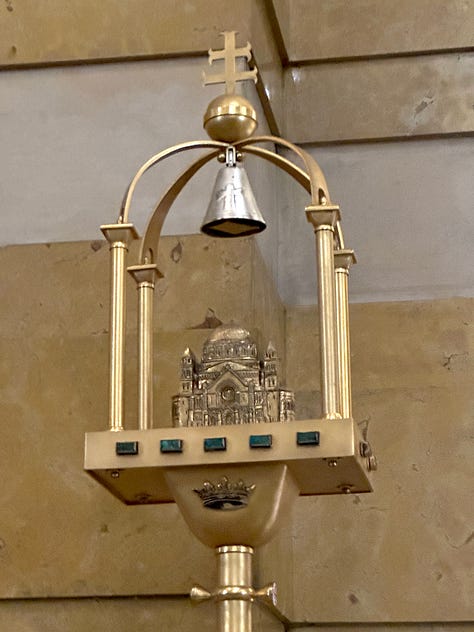
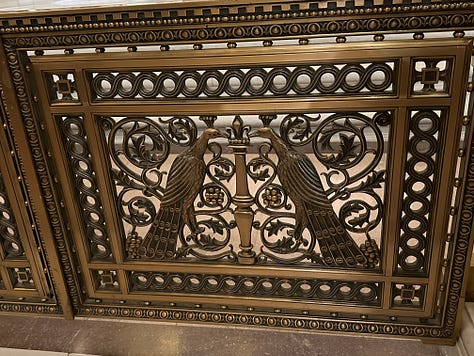
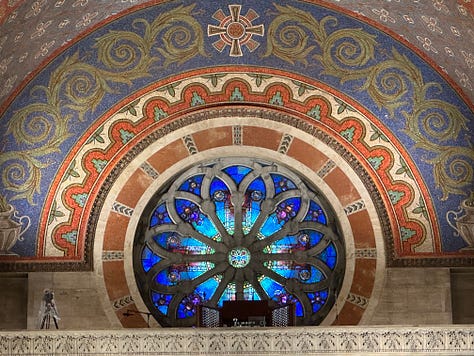
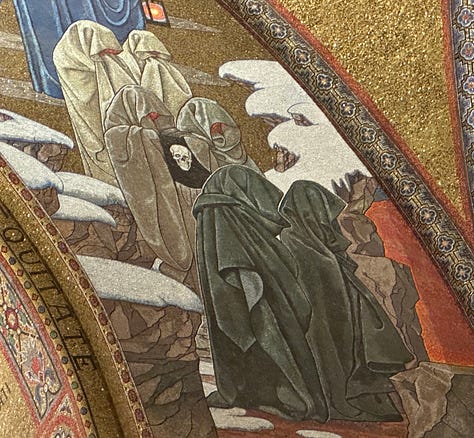
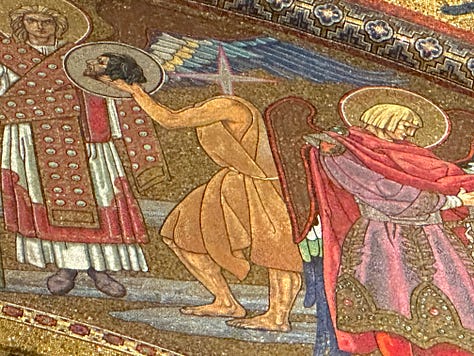
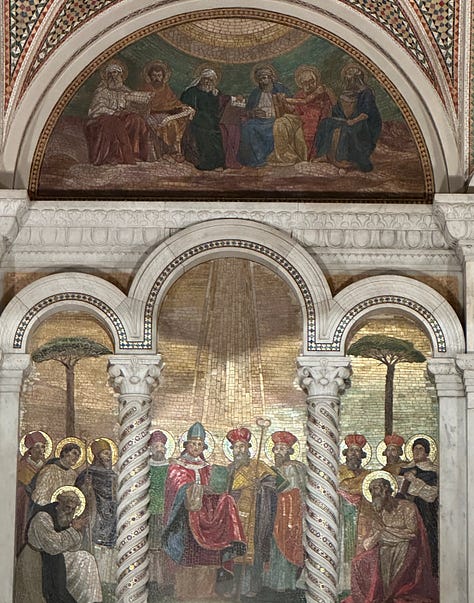
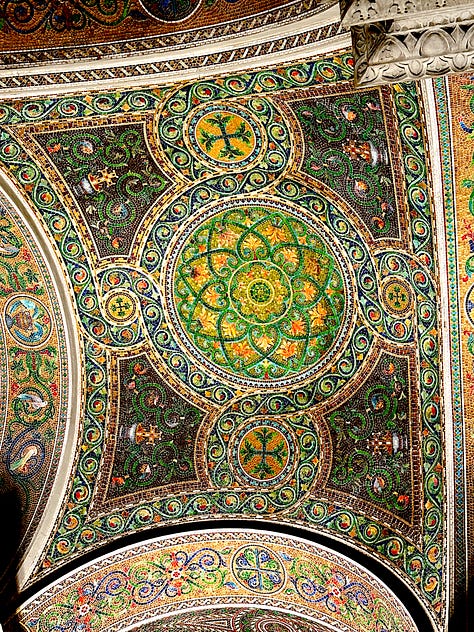

To learn more
This post really just scratches the surface of the Cathedral Basilica’s history and artwork. Visit the cathedral’s website to learn more about its history, schedule a tour, or view a 360° image of the interior.
And for more information about Bryan Mullanphy and his family (and their legacy), watch this space for an upcoming article and an in-person history talk in March, just in time for St. Patrick’s Day!
Follow Unseen St. Louis!
If you’re on Facebook, be sure to follow Unseen St. Louis for a variety of updates on preservation topics, interesting articles, upcoming events, and other content about St. Louis history. And if you’re in the STL area, join the Unseen STL History Adventures meetup so you can be the first to know about upcoming activities and tours. I have some fun adventures planned for 2024, so don’t miss out!

And of course, be sure to subscribe to Unseen St. Louis if you haven’t already done so. Fun fact: did you know that every time someone signs up for a paid subscription to support my work, an angel gets a halo? (It worked for Darth Vader, so it must be true!)

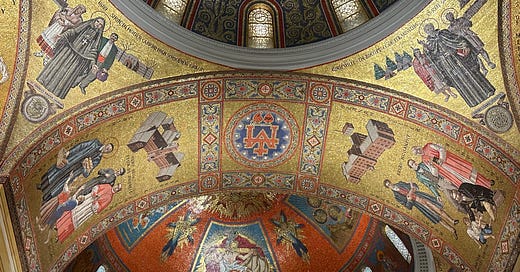



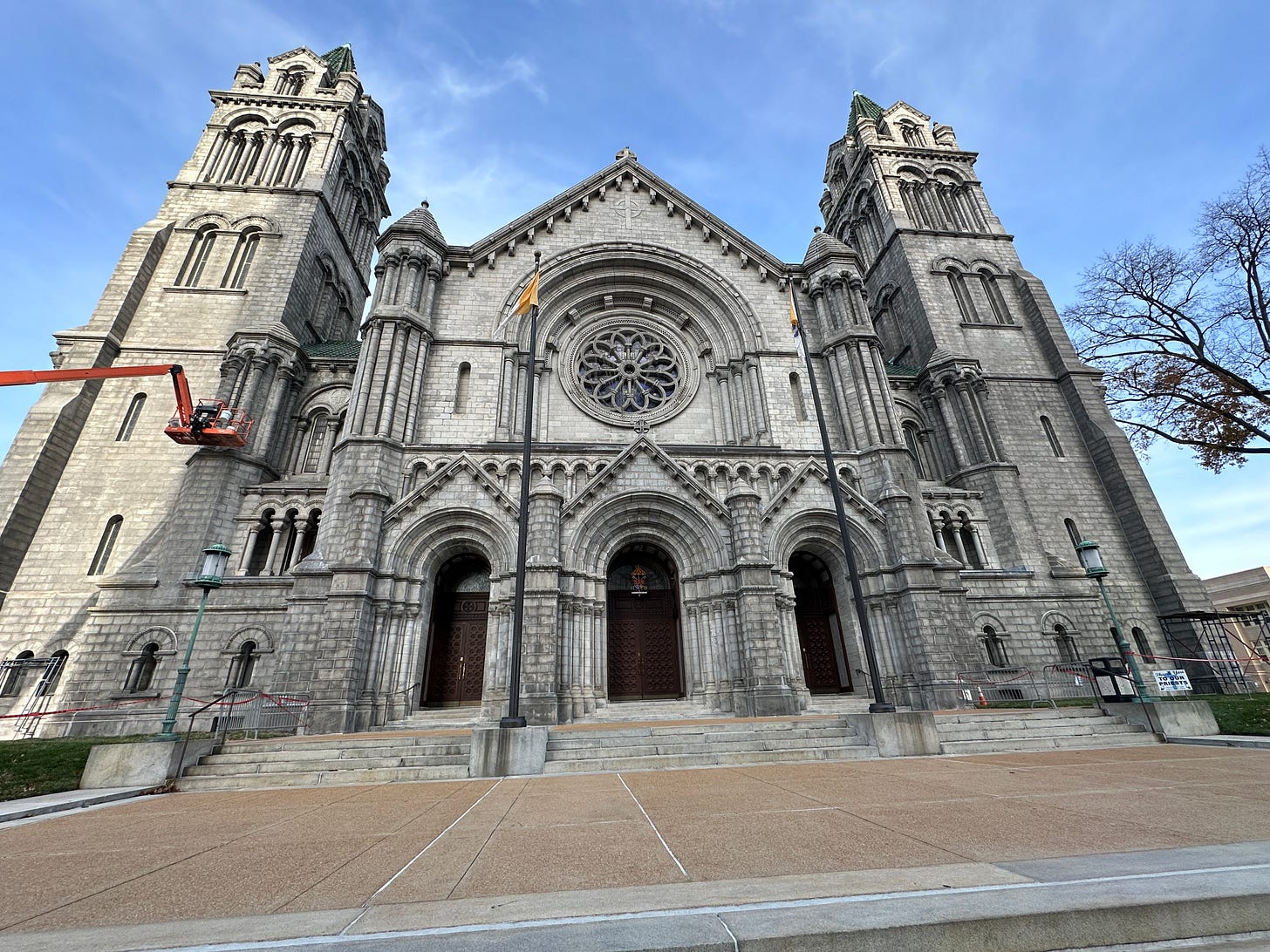
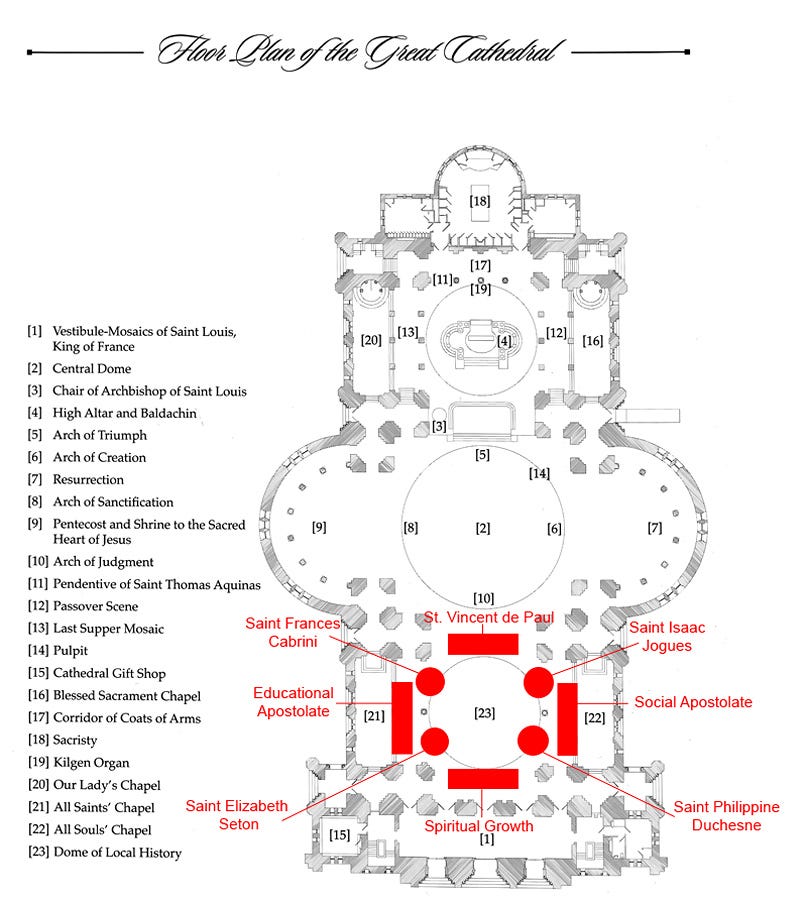
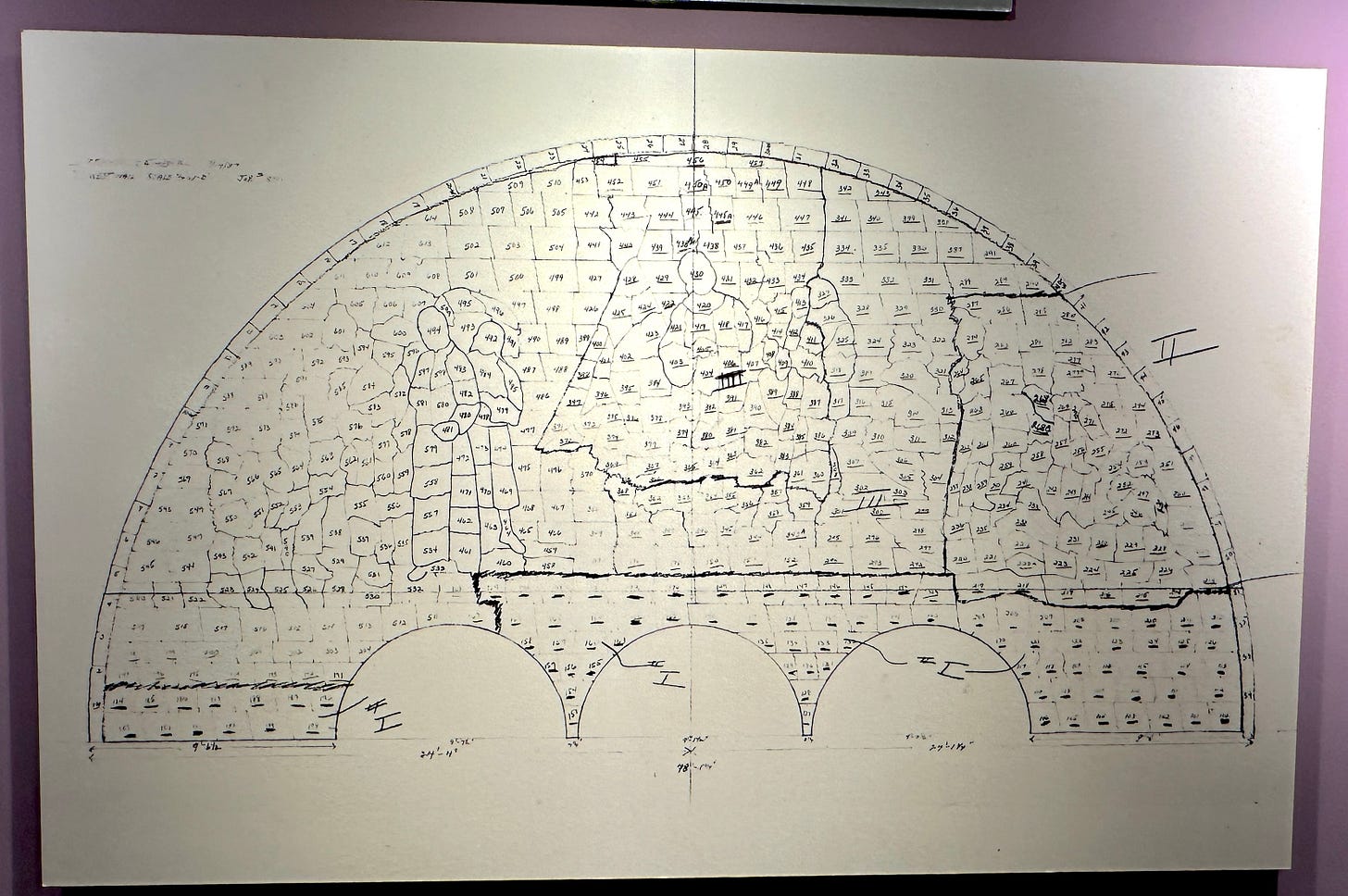
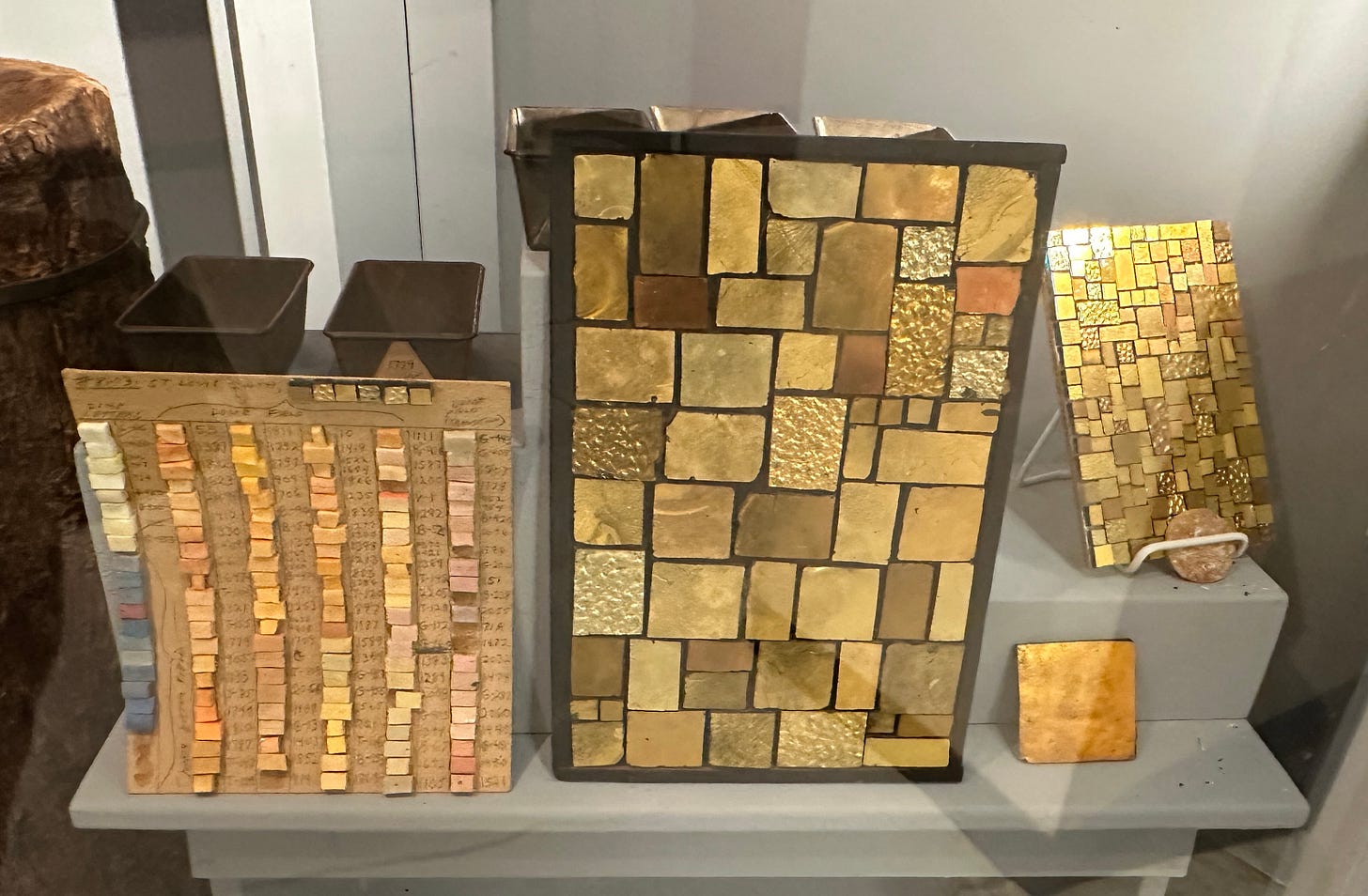
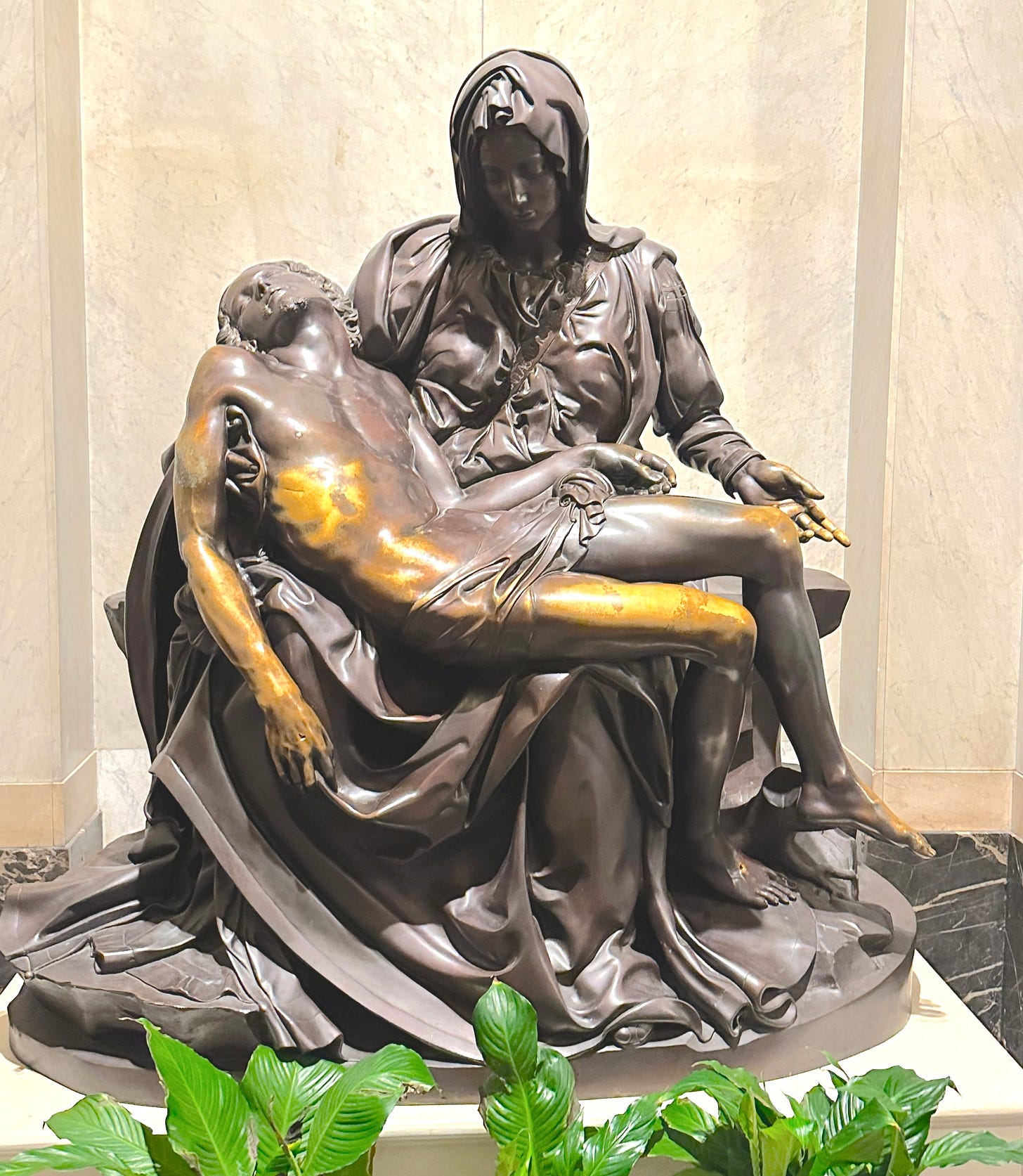

I only knew about Mullanphy because I'd tripped over the name in my haphazard history exploring, and I wondered what they did. Thanks for filling that in for me! I have a low key obsession with taking pictures of Ittner schools (https://nextstl.com/2012/09/the-st-louis-schools-of-william-b-ittner/), and the Mullanphy School on Shaw is an absolute knockout.
I ran across another wealthy, philanthropic, socially elite, bachelor recently when I took the tour of Campbell House. After the docent of the tour finished explaining how Hugh Campbell was generous, handsome, charitable and popular, yet for some reason never married, I asked if he was gay. She said it had never occurred to her.
Impressive Cathedral. I also recommend you to check the beauty from Lithuania - The Pažaislis monastery: https://en.wikipedia.org/wiki/Pa%C5%BEaislis_Monastery